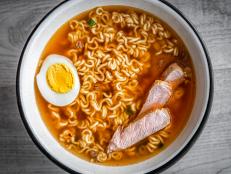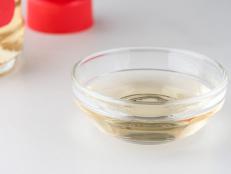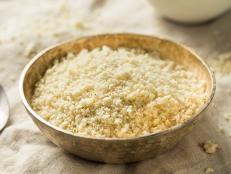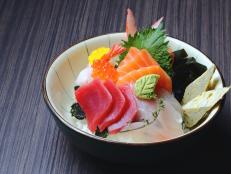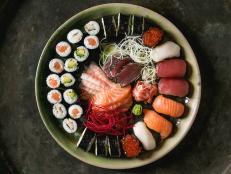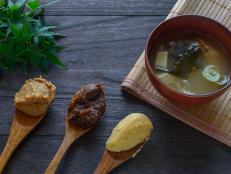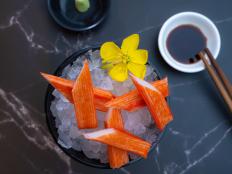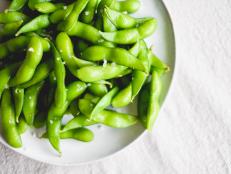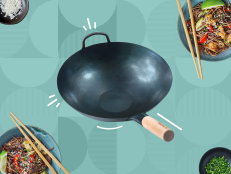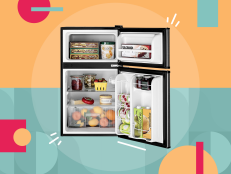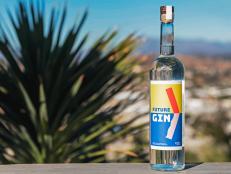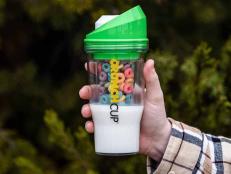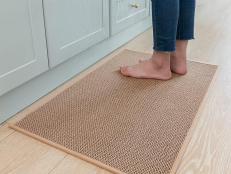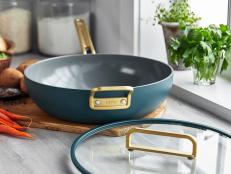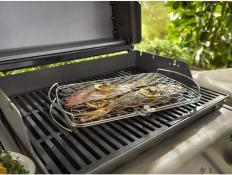What Are Shirataki Noodles?
How they’re different from glass noodles, the different varieties and how to cook them, according to an expert in Japanese cuisine.

AlexPro9500/Getty Images
By Layla Khoury-Hanold for Food Network Kitchen
Layla Khoury-Hanold is a contributor at Food Network.
You may have had tasted shirataki as part of a Japanese dish, or perhaps you know them as a popular gluten-free noodle alternative. But what are shirataki noodles and how do you cook them? Get the details from Pascale Yamashita, a recipe developer, food stylist, food photographer and avid food lover based in Japan.

AlexPro9500/Getty Images
What Are Shirataki Noodles?
Shirataki are translucent, gelatinous Japanese noodles that are made from the starchy tuber of the konjac plant (also known as konjac yam or elephant yam). Konjac is processed and refined into a flour called glucomannan flour. The glucomannan flour (3%) is mixed with water (97%), boiled and used to make shirataki in the same way that industrial pasta is made. Shirataki literally means “white waterfall,” which is how the long white strands got their name. The noodles are then packaged in an alkaline water solution to preserve their freshness and make them shelf stable for 60 to 90 days.
In Japan, shirataki noodles are part of konnyaku, a broader category of products derived from konjac yams. Konnyaku is used to make variety of different-shaped noodles that are used in different cooking applications. “Some are just torn with rugged edges to create maximum surface area for flavor when grilled or braised. Some come in squares that are cut into triangles to fit into pots well, some are formed into round ball shapes. They’re used in hot pot and oden (a one-pot dish that features a variety of ingredients in a slow-simmered broth) that’s especially popular in winter months.” Some traditional Japanese dishes that use shirataki noodles include sukiyaki, a Japanese beef hot pot dish, and niku jyaga, a meat and potato stew, both known for their sweet-and-savory soy sauce flavor.
Yamashita adds that recently, there are konnyaku products made in the shape of rice grains that are used as a low-carb rice substitute. No matter the shape, konnyaku noodles are slightly chewy in texture and mild in flavor, making them a versatile ingredient with a blank canvas that can stand up to long cooking applications and take on the flavor of different seasonings and sauces.
Shirataki vs. Glass Noodles
Yamashita says that the biggest difference between shirataki noodles and glass noodles is the base ingredient. Shirataki is made from the konjac yam, while glass noodles are made from either mung bean starch, potato starch, sweet potato starch, tapioca or canna starch. One other major difference is that glass noodles are typically sold as dried noodles, whereas shiratakis are typically sold “wet” and packaged in an alkaline water solution. Finally, glass noodles are more translucent in appearance than shirataki noodles.
Types of Shirataki Noodles
Yamashita says that in Japan, there are a variety of shirataki noodles available. “There are tofu shirataki noodles, matcha-infused shirataki noodles or vegetable-infused shirataki noodles, like carrot and green leaves, but they are usually mostly for color.”
Tofu shirataki are available in thick versions (akin to fettucine) and thinner versions (more like angel hair pasta).
Regular shirataki are about as thick as regular spaghetti strands. Yamashita adds that depending on the area, the type of konjac yam and the process employed can yield shirataki that are lighter or darker in color.
Shirataki noodles also go by a different name in Japan, called ito-konnyaku, which Yamashita says tend to be slightly thicker and darker in color (though not always the latter). “Calling it shirataki comes from eastern Japan and calling it ito-konnyaku is from western Japan,” she says. “In the past, ito-konnyaku was hand cut like soba or udon and shirataki was always made by machinery that pushes the noodle through holes. But today, both ito-konnyaku and shirataki are made the same way using industrial machines.”
Shirataki Noodle Substitutes
Since shirataki noodles are often used in long-cooking dishes, Yamashita recommends using substitutes that won’t expand or release too much starch. Glass noodles make a good substitute for shirataki noodles.

margouillatphotos/Getty Images
How to Cook Shirataki Noodles
1. Rinse the Shirataki
Shirataki noodles typically come packaged in an alkaline water that helps keep them fresh, so they need to be drained and thoroughly rinsed under cold running water first. The noodles sometimes retain traces of their distinctive konjac smell, so if this bothers you, Yamashita advises massaging the washed noodles with a little salt (about 1 teaspoon per 200 grams of shirataki).
2. Cut the Shirataki
If the noodles are very long, Yamashita advises cutting them into a manageable length, around 8 inches. In Japan, you can find pre-cut shirataki bound together for ease of preparation; these are called musubi shirataki or musubi ito-konnyaku.

Teri Lyn Fisher
3. Cook the Shirataki
How to Boil Shirataki: cook the noodles in boiling water for 3 to 5 minutes, then drain and serve with sauce and toppings of your choice. For a one-pot boiled shirataki dish, try this Shirataki Noodles recipe (pictured above), where the noodles cook alongside bok choy, carrots, cabbage, tofu and shiitake mushrooms in a sweet-savory broth.
How to Stir-Fry Shirataki: cooking shirataki in a hot pan without oil will help release some of its water content. This makes the shirataki better able to absorb marinades or seasonings in simmered, braised or grilled applications.
How to Blanch Shirataki: if you plan to eat shirataki chilled, blanch the noodles for about a minute in hot water and then rinse under cool water. Serve with desired sauces and toppings.
Related Links:






















